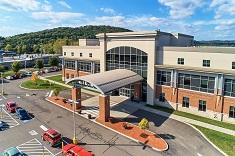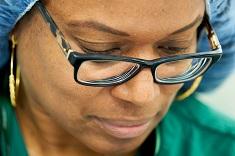
An annual mammogram can be a true lifesaver. And now, with mammography available so conveniently, there’s no need to put off getting one.
Mammograms at regular intervals can be a woman’s best ally in the early detection of breast cancer. They can detect slight changes even before symptoms are recognized, allowing any necessary treatment to begin early, which offers the best chance of success. “Mammography Saves Lives,” a nationwide coalition of medical associations and breast cancer care experts, reports that mammograms can show changes in the breast up to two years before a patient or physician feels them.
The National Comprehensive Cancer Network recommends screening mammograms starting at 40 for women of average risk. Most insurance carriers will cover one screening mammogram between ages 35 to 40, and then annually at 40 years and older.
Screening mammograms are the gold standard. But in women with dense breast tissue, a breast ultrasound or breast magnetic resonance image (MRI) may be ordered in conjunction with the mammogram appointment, or scheduled on a different day if further evaluation is required. In women with a significant family history of certain cancers or with other risk factors to consider, different types of screening tests and schedules are offered, as appropriate.
There are controllable and uncontrollable risks for breast cancer, according to medical specialists at UHS. Controllable risks include increased alcohol use, oral contraceptive use, weight, body mass index (BMI), activity level and breastfeeding history.
Non-controllable risks for breast cancer include age, age at first childbirth/number of childbirths, age at first period, age at onset of menopause, Ashkenazi Jewish heritage, being female (men can get breast cancer, but it’s 100 times more common in women), family history of breast, ovarian or prostate cancer, and/or inherited gene mutations.
With a family history of cancer, it is useful to be assessed for your risk status. The UHS Breast Center offers this service and, if appropriate, you can be referred to an on-site genetic counselor to discuss if genetic testing is indicated. Genetic testing can’t change your risk, but it can provide you with useful information and enable you to choose a different breast cancer surveillance plan, or make proactive decisions for yourself.
Breast cancer screenings have changed immensely over the last 20 years. Historically, mammography was completed using film. Around 1999, digital imaging became available, which improved the quality of the picture for the radiologist and lowered the dose of radiation to the patient. The most recent technological advancement in mammography is the introduction of tomosynthesis, or three-dimensional (3-D) mammography, which allows the radiologist to view the breast in precise, one-millimeter slices. This option is especially beneficial to women with dense breast tissue.
Why make time for a mammogram if nothing seems wrong? Early detection typically requires a far less aggressive treatment plan. A smaller, isolated cancer can often be treated using breast-conserving therapy like lumpectomy, along with radiation therapy. More aggressive options, such as mastectomy (removal of the breast) and chemotherapy may not be necessary if the cancer is caught early.
The national website breastcancer.org emphasizes that 90 to 95 percent of breast cancer patients have no family history of the disease, so screening isn’t just for those at elevated genetic risk. Women are listening: The American Cancer Society reports that breast cancer deaths in the United States have decreased by nearly 40 percent since 1990.
The UHS Breast Center is located at UHS Vestal, on the Vestal Parkway across from the entrance to Binghamton University.
To learn more about breast care resources within the UHS healthcare system, click here.


